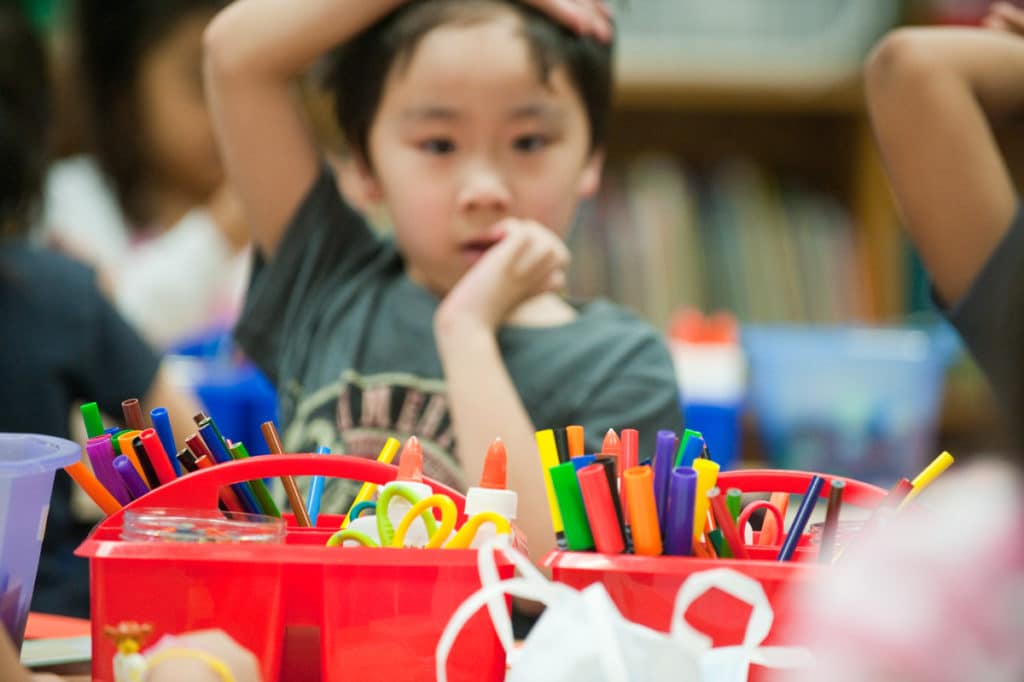
As the bustle of the after-school and after-work hours wound down for the night, I found my eight-year-old daughter in tears in her bedroom. She was hunched over her sketch pad. Colored pencils and multiple versions of self-portraits were spread all over the desk. When I asked her what was going on, she replied, “I’m just not an artist!” My immediate maternal instinct was to shower her with reassurance about how amazing she is, how much artistic talent she has, how masterfully she uses color in her drawings. But then I remembered a recent conversation I had about envisioning language with a co-worker, Ellie. And I stopped myself.
Ellie Cornecelli—former elementary and middle school art teacher and a Responsive Classroom program developer— shared that each year, as she welcomed students into her studio space, she was faced with some students whose mindset was “Artists are just people who paint and I’m not one of them.” To set a vision for all students that they were indeed artists, each with their own perspective, skills, and creative ideas, she started the year by establishing positive thinking habits through envisioning language, telling students, “Artists need two things: an idea to express and tools to express their ideas.” Envisioning language helps students see themselves achieving in ways that are beyond what they already know they can do—in the case of Ellie’s students, thinking of themselves as artists, regardless of their skill level or prior knowledge of art.
One of the beliefs underlying the Responsive Classroom approach to teaching is that all students can learn and want to learn, and envisioning language reinforces this message. Ellie told me how she conveyed this belief to her students using statements like, “In this class, we will work responsibly and quietly so we can all be creative.” In addition, she used envisioning language to engage students in problem-solving: “When artists encounter problems, they persist and find a solution. I’ll be looking for all the ways you find solutions to problems today.” Ellie’s language conveyed her faith in the students’ ability to work through learning new techniques and to persevere through challenges.
After seeing the positive impact it had on students’ confidence, Ellie started using envisioning language to create class vision statements from students’ individual visions. Ellie posed these questions to her art classes: “What do we want this space to be like?” and “What are we going to do together to create a space where everyone’s creative flow is respected?” At the elementary level, students were invited to share their vision for themselves as artists with the rest of the class. Middle school students reflected on their vision, wrote it down, and shared it privately with Ellie. In both cases, from the individual statements a class vision statement was created that both students and Ellie could refer back to. By the end of the year, Ellie saw a shift both in students’ mindsets around art, and in how they approached their goals.
As I stood at my daughter’s desk and reflected on my conversation with Ellie, I realized that I was about to dole out praise that was not helpful in setting her up for future success. What ended up coming out of my mouth was this: “Let’s think like an artist. What tools do you need to do your best creative work? What does your space need to look and feel like?” This interaction concluded with a plan to visit the local craft store with my budding artist!
Any student can become frustrated when they encounter tasks and academic areas that they perceive they’re not good at. It’s our responsibility as educators to set a positive vision for them, to teach them the power of perseverance, and to facilitate their journey toward reaching their fullest potential. As educators, we are in the business of inspiring hope and of setting a vision for the future.
Allison Henry is a former educator and school counselor, and is now the Director of Marketing and Client Services at the Center for Responsive Schools.
To learn more about the power of envisioning language: